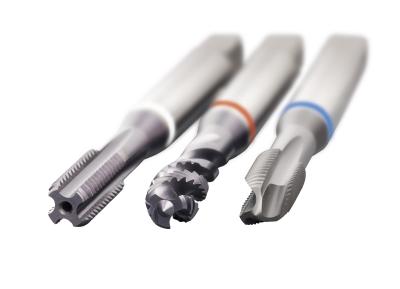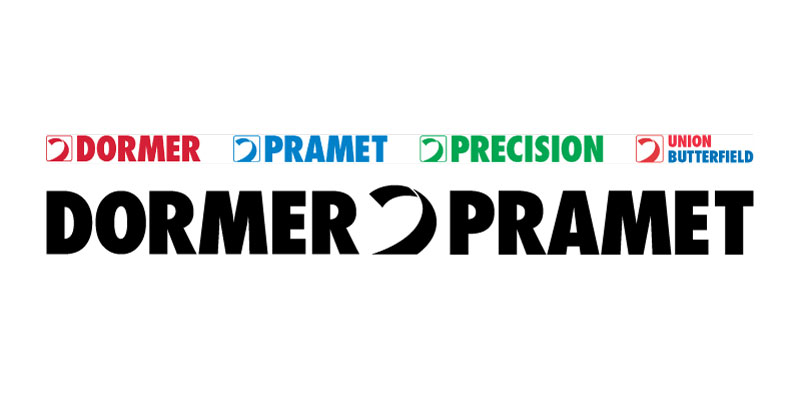
Machine shops across the northeastern states of America are getting the job done thanks to support from cutting tool manufacturer Dormer Pramet.
An end user in Cincinnati, machining small spindles of 303 stainless steel was achieving tool life of around 400 holes per tap. The Dormer spiral flute Blue Shark was tested as an alternative option. Although the recommended speed for this tap is 400 rpm, the end user ran their existing program (100 rpm) and achieved 1,500 holes. The company quickly switched to Shark taps and are looking to increase speed rate further to save time and improve tool life on other applications.
In Indianapolis, a machine shop bought a new CNC but was not happy with the performance or price of the tooling provided with it. The Dormer Yellow Shark tap was tested due to the soft steel material being machined, with the DIN version providing a suitable fixing option. Overall it achieved 50 percent more holes without changing running parameters and was less expensive than the previous tooling, making it a win-win. The shop now regularly purchases the Dormer range of Shark Line taps.
Over in Michigan, a company was tapping holes in a variety of stainless steels for items in the food industry. The company was having significant trouble with its taps, with many breaking, leading to the machined parts being scrapped. Dormer’s Blue Shark tap was brought in and now the customer is seeing none of its tooling break. It means the company is saving thousands of dollars by not scrapping taps or machined parts on a regular basis. All its taps are now from the Shark Line range and the shop is adding the Dormer Force drills, also specifically designed for stainless steels.
Finally, back in Ohio, a job shop specializing in precision machining was looking for a new tap to take over all its threading applications. The shop was looking for a "do all" tap to provide versatility across steels and stainless steel. Not getting enough tool life out of its current taps, the end user decided to put the Dormer Blue Shark through testing. The tap proved itself in all the applications, and the shop has converted all threading tools to Dormer Pramet.
Each Shark Line tap features a color ring on the tool shank denoting material suitability, promoting quick and easy tool selection. Yellow Shark is for threading low alloy steels, Red Shark for thread production in alloy steels, a stainless steel thread is achieved with Blue Shark, the White Shark is specifically for cast iron and other short chipping materials, while the Green Shark is for nonferrous materials.
Contact Details
Related Glossary Terms
- alloy steels
alloy steels
Steel containing specified quantities of alloying elements (other than carbon and the commonly accepted amounts of manganese, sulfur and phosphorus) added to cause changes in the metal’s mechanical and/or physical properties. Principal alloying elements are nickel, chromium, molybdenum and silicon. Some grades of alloy steels contain one or more of these elements: vanadium, boron, lead and copper.
- computer numerical control ( CNC)
computer numerical control ( CNC)
Microprocessor-based controller dedicated to a machine tool that permits the creation or modification of parts. Programmed numerical control activates the machine’s servos and spindle drives and controls the various machining operations. See DNC, direct numerical control; NC, numerical control.
- precision machining ( precision measurement)
precision machining ( precision measurement)
Machining and measuring to exacting standards. Four basic considerations are: dimensions, or geometrical characteristics such as lengths, angles and diameters of which the sizes are numerically specified; limits, or the maximum and minimum sizes permissible for a specified dimension; tolerances, or the total permissible variations in size; and allowances, or the prescribed differences in dimensions between mating parts.
- shank
shank
Main body of a tool; the portion of a drill or similar end-held tool that fits into a collet, chuck or similar mounting device.
- stainless steels
stainless steels
Stainless steels possess high strength, heat resistance, excellent workability and erosion resistance. Four general classes have been developed to cover a range of mechanical and physical properties for particular applications. The four classes are: the austenitic types of the chromium-nickel-manganese 200 series and the chromium-nickel 300 series; the martensitic types of the chromium, hardenable 400 series; the chromium, nonhardenable 400-series ferritic types; and the precipitation-hardening type of chromium-nickel alloys with additional elements that are hardenable by solution treating and aging.
- tap
tap
Cylindrical tool that cuts internal threads and has flutes to remove chips and carry tapping fluid to the point of cut. Normally used on a drill press or tapping machine but also may be operated manually. See tapping.
- tapping
tapping
Machining operation in which a tap, with teeth on its periphery, cuts internal threads in a predrilled hole having a smaller diameter than the tap diameter. Threads are formed by a combined rotary and axial-relative motion between tap and workpiece. See tap.
- threading
threading
Process of both external (e.g., thread milling) and internal (e.g., tapping, thread milling) cutting, turning and rolling of threads into particular material. Standardized specifications are available to determine the desired results of the threading process. Numerous thread-series designations are written for specific applications. Threading often is performed on a lathe. Specifications such as thread height are critical in determining the strength of the threads. The material used is taken into consideration in determining the expected results of any particular application for that threaded piece. In external threading, a calculated depth is required as well as a particular angle to the cut. To perform internal threading, the exact diameter to bore the hole is critical before threading. The threads are distinguished from one another by the amount of tolerance and/or allowance that is specified. See turning.

